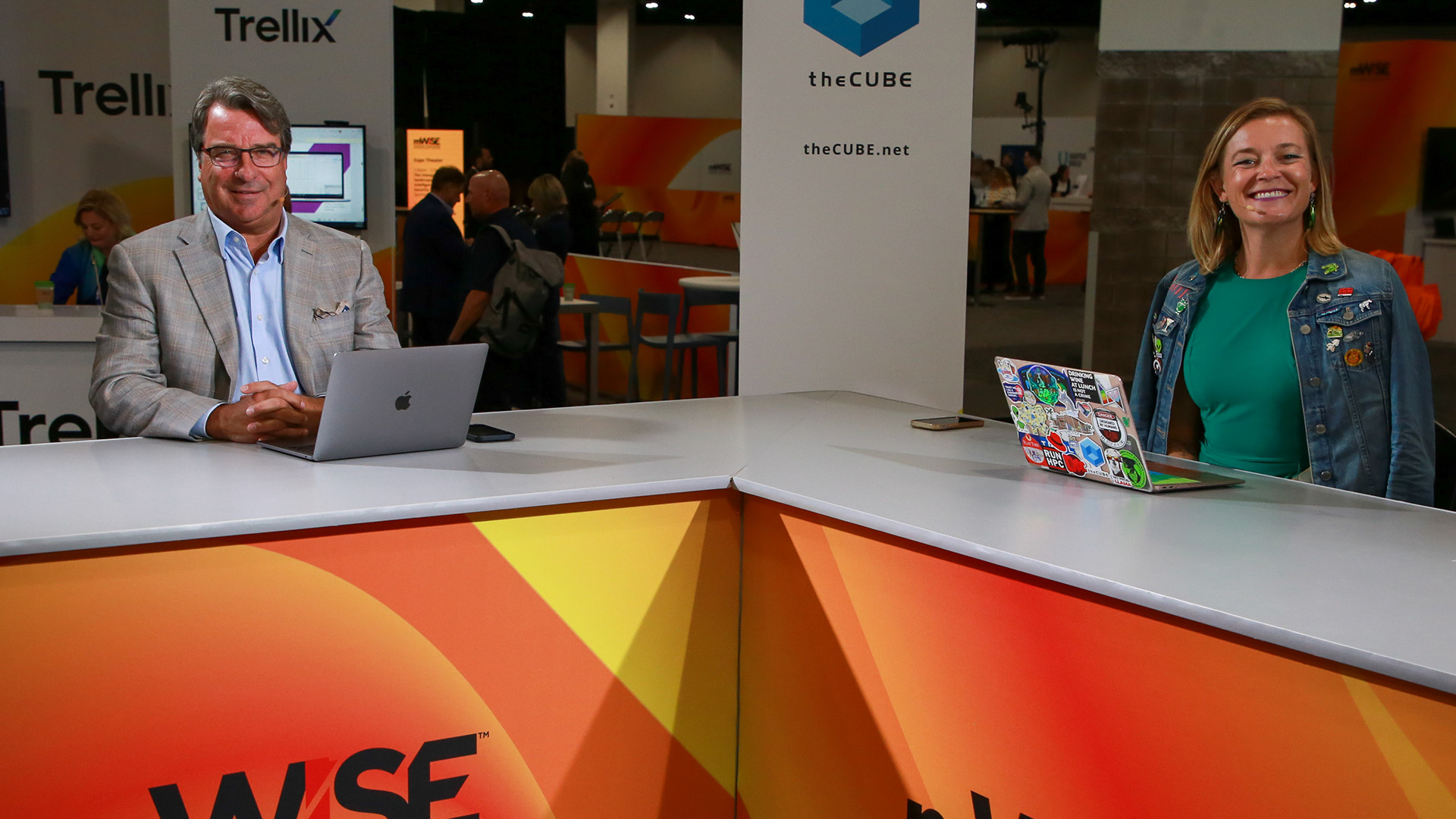 SECURITY
SECURITY
 SECURITY
SECURITY
 SECURITY
SECURITY
The reach of enterprise technologies such as artificial intelligence has permeated every business operations area. Given the resulting explosion in organizational data generation and reliance, the surface for cyberattacks has expanded. This growing vulnerability calls for an evolution of security frameworks and the need for strong cyber resilience with AI.

TheCUBE set at mWISE as our analysts prepare for the keynote analysis.
“Security is one of those data problem areas and it’s got a lot of risk management,” said John Furrier (pictured, left), executive analyst at theCUBE Research. “You’ve got a lot of interplay and forces coming together from people, policy and technology to everything from UX to efficiency on operations. There’s also reducing the steps it takes to make the user experience better, workflow management, and ultimately, at the end of the day, balancing the asymmetry between the bad guys and the good guys, as they say, offense and defense.”
Furrier was joined by fellow theCUBE Research analyst Savannah Peterson (right) for an analyst segment at mWISE 2024, during an exclusive broadcast on theCUBE, SiliconANGLE Media’s livestreaming studio. They discussed the future of cyber resilience with AI — one where cross-functional collaboration and readiness will play critical roles in safeguarding both enterprises and national security. (* Disclosure below.)
As organizations grapple with AI-related risks, AI-powered security tools have emerged as key solutions. These tools can automate threat detection, streamline incident responses and provide predictive insights — but they come with risks. Implementing strong governance models that ensure the ethical and secure use of AI models can help companies achieve the delicate balance between maximizing AI’s potential and minimizing its security risks, according to Furrier.
“You train the data and then, over time, it progresses and you start inferring from that knowledge,” he said. “Sensitive information disclosures and breaches are huge. Whether that’s infected LLMs or hallucinations or drift, data is coming out. Generative AI is increasing the surface area and is increasing the opportunities for cybercriminals to attack. Again, this is a massive market force and the collaboration between the teams is huge.”
Resilience has been a central theme at mWISE 2024. The focus on merely preventing attacks is yesterday’s approach — companies must also assume that an inevitable breach will occur. Cyber resilience with AI is a comprehensive strategy that includes both data backups and recovery plans and the ability to maintain operations during and after an attack. This approach is especially critical in the face of sophisticated threats such as ransomware.
“Cyber resilience is now broad, from data backup and recovery to recovering from a breach like ransomware or maintaining the resilience of a stock,” Furrier said. “We heard from Taylor [Lehmann] who runs all the CISO work at Google. These are the issues. How do I operate with my critical systems? How do I stress-test them? What can red teams do more of? All this is now completely at full scale and it’s super important.”
The rise of agentic systems — AI applications that operate autonomously — presents additional challenges in supply chain security. Application security and supply chain observability must evolve in tandem to protect sensitive data. As AI permeates enterprise environments, the need for security protocols that protect both backend and frontend systems is more important than ever, Furrier concluded.
“Agentic Systems is going to be part of an end-to-end application,” he said. “When you look at that, it’s a supply chain problem because when you deal with third parties, like APIs for instance, you want to know what’s on the other side, not just saying you’re secure. How do you ensure security end-to-end? And remember, we’ve seen the evolution of the supply chain conversation from hardware.”
Here’s the complete video interview, part of SiliconANGLE’s and theCUBE Research’s coverage of mWISE 2024:
(* Disclosure: mWISE sponsored this segment of theCUBE. Neither mWISE nor other sponsors have editorial control over content on theCUBE or SiliconANGLE.)
Support our open free content by sharing and engaging with our content and community.
Where Technology Leaders Connect, Share Intelligence & Create Opportunities
SiliconANGLE Media is a recognized leader in digital media innovation serving innovative audiences and brands, bringing together cutting-edge technology, influential content, strategic insights and real-time audience engagement. As the parent company of SiliconANGLE, theCUBE Network, theCUBE Research, CUBE365, theCUBE AI and theCUBE SuperStudios — such as those established in Silicon Valley and the New York Stock Exchange (NYSE) — SiliconANGLE Media operates at the intersection of media, technology, and AI. .
Founded by tech visionaries John Furrier and Dave Vellante, SiliconANGLE Media has built a powerful ecosystem of industry-leading digital media brands, with a reach of 15+ million elite tech professionals. The company’s new, proprietary theCUBE AI Video cloud is breaking ground in audience interaction, leveraging theCUBEai.com neural network to help technology companies make data-driven decisions and stay at the forefront of industry conversations.